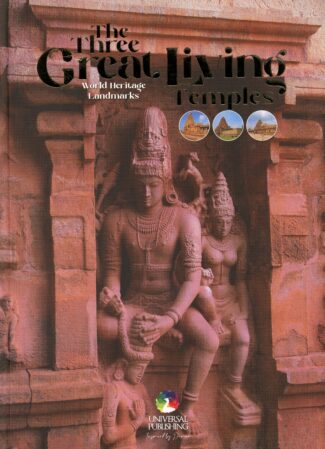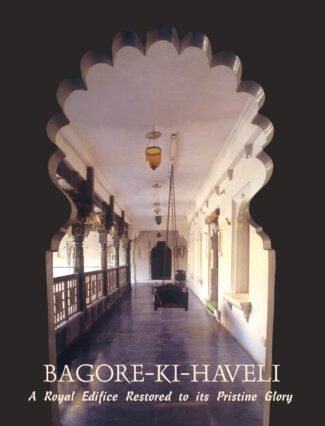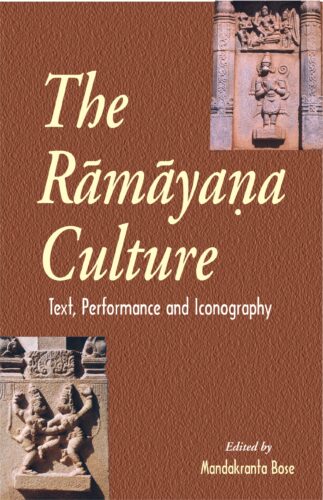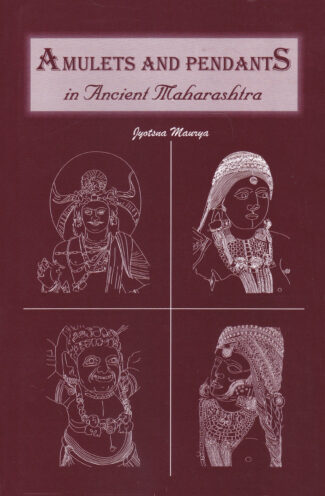

The Three Great Livi...
The Three Great Living Temples
World Heritage Landmarks by: Prof. S. Rajavelu , Ram Shankar₹1,400.00 Original price was: ₹1,400.00.₹1,260.00Current price is: ₹1,260.00.
ISBN: 9788195171873
Year Of Publication: 2024
Edition: 1st
Pages : 176
Language : English
Binding : Hardcover
Publisher: Universal Publishing
Size: 30
Weight: 700
“The Three Great Living Temples” Cancel reply
- Sale!Artisans and Craftsmen of Northern India by: Kuldeep Singh Thind
₹1,100.00Original price was: ₹1,100.00.₹990.00Current price is: ₹990.00.The basic aim of the book is to expose the major contributions of artisans and craftsmen in portraying the society in different perspectives. These artisans and craftsmen, were drawn mostly from the shudras, lower caste of the community, suppressed and have-nots section of the society, but were highly talented. The work is also designed to create interest among the reader and scholars alike, to understand the society of the period under reference through the immortal art of these creative people. The artisans such as potters, weavers, carpenters, architects, sculptors, brick-makers, metallurgy and metal workers, leather workers, painters, and the workers engaged in the profession of ivory, glass and mirror, perfume and cosmetic, musical instrument, oil, salt and liquor makers, etc. were the heroes of that time, who not only met the day-to-day requirement of the then society, but also portrayed different aspects of their life, in its true color, through their workmanship. It was the architect who designed and constructed houses to live in, as well as water tank, well and channel, royal building, stupa, temple and fort, bridge, pillar and rock-edict etc., which met the need of the society.
Today, we feel proud of the rich heritage of old Indian art and architecture, credit for which solely goes to the then artisan who crafted immortal creations. However, the invaluable contribution made by the historians in immortalizing their creations, by putting them in black and white, is no less important. It is the historian, whose mighty pen has immortalized not only Ashoka the great, as a king but also the creators of the stupas of his times on equal footings. It is with this aim in view that the present book has been presented to the posterity, in order to pay rich tributes to the creators of our rich cultural heritage.
Unluckly there was no proper institutionalized provision for the education of artisans and craftsmen, so generally the former adopted the occupation of their parents and hereditary skill was enhances as it was transferred from father to son, and generation to generation. Contemporary sources reveal that the social stautus of artisan class was based on the nature and economic conditions of a particular profession. - Sale!Bagore-Ki-Haveli by: Piers Helsen
₹95.00Original price was: ₹95.00.₹86.00Current price is: ₹86.00.Rajasthan boasts of many beautiful monuments and structures of the royalty which stand as evidence to Indias glorious ancient culture and heritage. The Bagore-ki-Haveli is one such edifice. The book takes us through the architectural wonders of the haveli to reflect what it had been the royal household of Maharaj of Bagore. With many splendid colour photographs of its impressive rooms, large balconies, wide terraces and attractive, leafy courtyards, it reconstructs the royal household and its functioning, customs and religious practices, costumes and ornaments, and arts and entertainment. It captures the artistic brilliance of the exquisite glass inlay work and paintings in the restored haveli including a gallery of Madhurastakam paintings describing the loveliness of Sri Krishna and his divine lover, Radha. The work highlights the charming style of the haveli that typifies the best of Mewari architecture but has a unique character of its own. The book, a visual delight presenting a glimpse into the royal lifestyle and splendour of the time, will be invaluable to historians studying the history, art and architecture of north India in the centuries before Indias independence and will also interest readers in general as well as tourists.
- Sale!Absence of the Buddha Image in Early Buddhist Art by: Kanoko Tanaka
₹1,500.00Original price was: ₹1,500.00.₹1,350.00Current price is: ₹1,350.00.It is next to impossible today to even think of Buddhism without the presence of the Buddha image! The image of the Buddha, in truth, has not only come to symbolise the essence of Buddhism but is also a brilliant expression of the cultural/artistic achievements of the Buddhists since ancient times. Surprisingly, the Buddha image developed at a later stage of the evolutionary process; after the parinirvana of the Buddha, the Buddhists for a considerable time beheld the Buddha and experienced him in their own minds without taking recourse to the Buddha image itself. In Absence of the Buddha Image in Early Buddhist Art, Dr. Tanaka, a well-versed scholar, has for the first time ever explored the absence of the Buddha image in Buddhist art particularly in the period from third century bc to late first century ad in order to rediscover the significance of this phenomenon. Dr. Tanaka observes Bharhut and Sanchi sculptures to point out the most essential motifs and elements of stupa-art design the visible facts pertaining to the absence of the Buddha image. The author studies the religious, philosophical, artistic and political significance of the visible facts, highlighting the concept of the empty throne as the motif representative of that absence. She applies the empty throne concept to the sanctuaries of monotheistic religions, and thus undertakes a comparative study of Buddhism and other religions, particularly, Zoroastrianism, Judaism, Christianity, Islam and Sikhism to suggest that present-day discussions on the linkage between religions can centre on this theme. The dexterous handling of the topic combined with the authors use of first-hand research material makes this an erudite study. The directness in the authors approach and the unwavering eye on the theme sustains the interest throughout. An abundance of visual material, i.e., drawings and photographs, and tables immensely aid in analysis of the visible facts. This intense work on a rich theme offers well-researched and interesting material that will be useful to scholars of religious studies, fine arts and even philosophy.
- Sale!Ramayana Culture by: Mandakranta Bose
₹800.00Original price was: ₹800.00.₹720.00Current price is: ₹720.00.These essays, originally presented at an international conference, are in the forefront of the modern response to an ancient work that has gained a new critical and social relevance in contemporary scholarship. Approaching the Ramayana from several angles in an attempt to understand its aesthetic and ideological meaning, they examine the epic through the perspectives of textual criticism, art, architecture and film. Thereby they address critical issues such as the seminal status of Valmiki, the underlying problem of canonicity itself, the importance of other — so-called derivative — Ramayanas, the implications of gender representation, and the cultural manipulation of social ideals relating to the position of women and the idealisation of love that achieves its highest value in marriage. Using the methods of rigorous textual and historical investigation, each essay seeks not only to uncover the layers of meaning in the complex structure of the epic in its varied forms but also to situate it critically in the cultures of South and Southeast Asia.
- Sale!Amulets and Pendants in Ancient Maharashtra (3rd c. bc to 3rd c. ce) by: Jyotsna Maurya
₹220.00Original price was: ₹220.00.₹198.00Current price is: ₹198.00.The book documents Indias rich tradition of ornamentation as reflected in its numerous and varied collection of amulets and pendants recovered from archaeological excavations in Maharashtra. It studies the significance of these ornaments as a visible expression of the artistic excellence and cultural wealth of the ancient Indian civilisation particularly at the time of the great Mauryan and Satvahana dynasties. Discussing the evolution of these portable charms against their socio-economic and religious background, the authoress examines the different types of amulets and pendants excavated, the techniques used in making them, their parallels in literary and sculptural representations, and Buddhist influence on them. Giving insights into the sources of raw materials used in these charms, she takes up in detail the trade relations of a specific site with other contemporary sites. With a number of figures and maps, the work promises to be useful to both scholars and students of Indology focussing on facets of Indian culture.










There are no reviews yet.